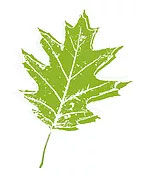Etymology
Viola is an old Latin word for sweet scented flowers; Cucullata is Latin for ‘hoodlike,’ referring to having sides curved inward resembling a hood.
Native Habitat
Streambanks, wetland edges, and wet meadows.
Garden Uses
This perennial wildflower is well-suited to the wild garden, along banks, ponds or streams. It can be used as a ground cover.
Overview
The blue marsh violet is a low-growing perennial commonly found in damp or moist areas, along streams, wet meadows and lawns and at the edges of wetlands. It thrives in shade or sun and grows from a thick fleshy, horizontal rhizome and does not produce stolons.
Leaves and Stems
The leaves are simple, lobed and unlobed, and grow only at the base of the plant. The edge of the leaf blade has teeth. Mature leaves are heart-shaped and can be up to 4” across. The stems arise from a low rosette of basal leaves about 6” across. The stems are hairless and single – holding one flower.
Flowers
The 1” single bare flowers are blue to violet and are bilaterally symmetric. They have five petals and the lower spurred petal is beardless, has darker blue veins, and is typically shorter than the two lateral petals.
Fruit/Seed
The ½” light brownish to bronze fruit is dry and splits open when ripe.
Wildlife Associates
Nectar from the flowers attracts butterflies and bees. Members of the genus Viola support the following specialized bees: Andrena fragilis, Andrena integra, and Andrena platyparia all in the subgenus Gonandrena. The caterpillars of several Fritillary butterflies feed on the foliage. The seeds are occasionally eaten by birds and gathered by ants for their oil rich appendages (eliasomes).
Propagation
This plant spreads by self-seeding and creeping rhizomes.
Ethnobotanical Uses
The young leaves are rich in Vitamin A and C and can be used in salads. The Cherokee used a poultice of the leaves to treat headaches.
Garden Location
North Woods (see garden map)
Sources
North Carolina Cooperative Extension Service
Friends of the Wildflower Garden
Plant Profile by Kathy Kling

